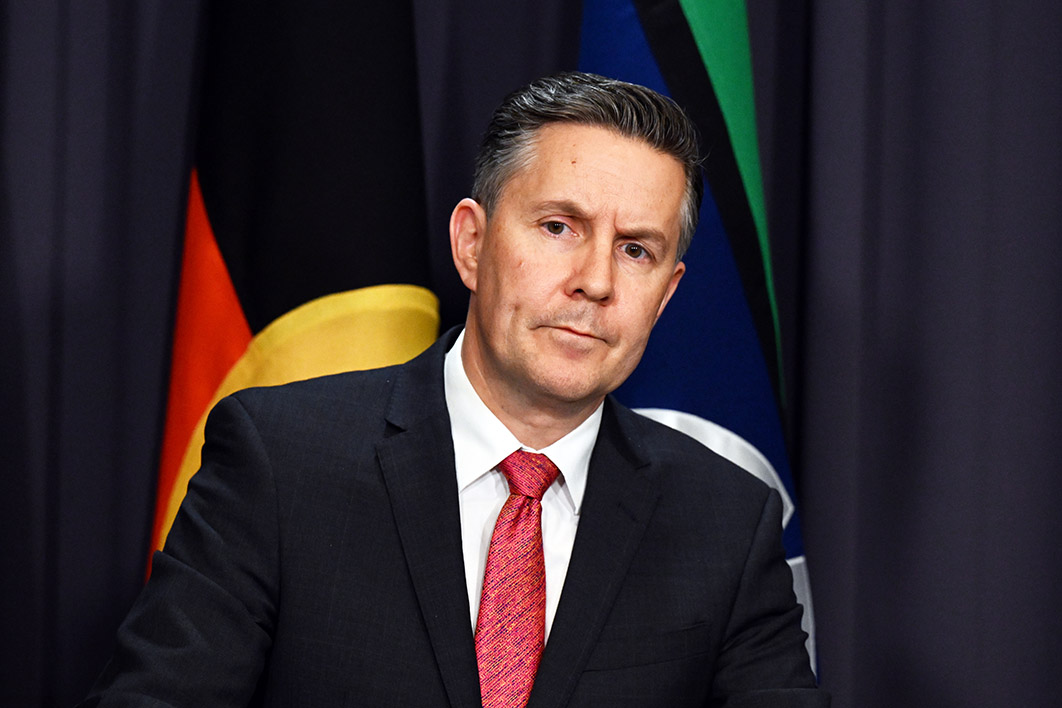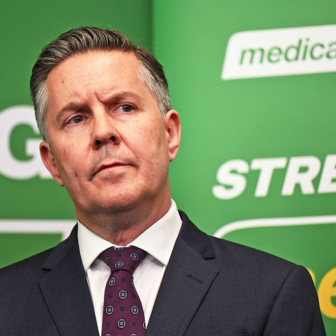When federal health minister Mark Butler announced a cut to the Better Access program late last year, his rationale was grounded in health equity. Since the onset of the pandemic, the Better Access program has been subsidising up to twenty visits a year to psychologists and social workers, but that number will now be reduced to ten. Expanding access to care hasn’t led to more people getting access to care, Butler argued; rather, people already using the program have been attending more sessions.
Mental health professionals mostly condemned the change. “Just as people shouldn’t be asked to ration vital medicines like insulin,” said the Australian Psychological Society, “they shouldn’t have to ration mental health care.”
But one expert stood against the trend: Ian Hickie, co-director of Health and Policy at Sydney University’s Brain and Mind Centre, who has been a persistent critic of the scheme.
Hickie is a go-to commentator on matters of mental health in Australia. Yet news outlets turning to him for comment rarely acknowledge he has a stake in the debate. He was a co-founder of Headspace, a federally funded network of mental healthcare hubs for young people that competes with private practices for trained staff.
Commenting on the Better Access cuts, Hickie complained that Headspace “had lost a third of its skilled workforce to the private sector over the last three years.” He called for the government to fund more places for clinical psychology graduates and to “deploy” the extra graduates to work in rural and regional areas.
Headspace serves people aged between twelve and twenty-five. But the federal government may be considering a Headspace-style approach to adult mental healthcare, with publicly funded care provided by staff based at “hubs” around the country. This would solve many of the agency problems that affect quasi-markets for care like Medicare and the National Disability Insurance Scheme. In its role as overseer of these markets, the government has no direct control over what services are provided and where practitioners can work from.
This is an important debate — yet a key voice has gone missing. All the commentary on the Better Access debate has come from people who research and treat mental illness; we haven’t heard from the people most affected by the changes, people living with mental illness.
I have been living with serious mental illness for more than two decades. In a recent essay for Meanjin I described my decision to come out about living with an alphabet soup of mental illness: ADHD, bipolar type 2, complex PTSD. I manage these conditions alongside my career and my PhD studies in regulation and governance.
This challenge isn’t uncommon: up to 3 per cent of the adult population are living with bipolar disorder. But you almost never hear from people like me — people with serious mental illness — in media coverage of mental healthcare.
For this, I blame the mental health sector itself. It uses the term “lived experience” to describe (and arguably, to contain) the perspective of people with mental illness. But there are few mental health organisations that engage with the mentally ill community as a community — building our potential to advocate on our own behalf.
Many mental health organisations are purely service providers, offering programs and services to people conceived solely as service users. That’s why you’re not hearing about the likely impact of the Better Access program changes from the people most likely to be affected.
Here’s how I am affected by those changes. A few months ago I was in a really sticky place with my mental health. Sticky in the sense of being stuck, but also because it was sticking to everything: my dating life, my family relationships, my work, my PhD study, the lot.
I work for a community service wage, and on top of that I pay the mental health tax — psychiatrist fees and the cost of off-label medication. I would struggle to pay for private care at $150-plus per session.
I’m part of the client group identified by Jillian Harrington as needing extra care to make progress: people with developmental trauma or (as it is also known) complex PTSD. As I wrote on my blog:
In the original Latin, complex meant interwoven. For me, it’s not just the ongoingness of (childhood) trauma that produces complex PTSD; it’s the fact that the trauma becomes part of your personhood. The traumatic experience forms you as a person. Thus, treating cPTSD is fundamentally difficult: it involves changing your whole way of being in the world, not just treating symptoms or modifying unhelpful patterns of behaviour.
And this is doubly difficult because of the fact of interbeing — our personhood is constituted in and through webs of relationship with other people, animals, objects, places, structures, and rituals. Changing yourself is hard when these webs of relationship remain in place and unmodified.
In the aftermath of last year’s “menty B” I started a program of care with a counsellor in private practice who uses a range of cognitive therapies to support clients with the needs I identified. In particular, my goal was to develop skills for getting out of periods of intense distress before I burn out or break down. Twenty sessions is enough to tackle that goal.
I’ve done extended periods of counselling when I was earning more and I could pay out of pocket. I know that I can bring a particular problem to a counsellor and work with them to build the skills I need to deal with it. Bit by bit, brick by brick, I build up my boundaries against the kind of situations that have historically placed my mental health and stability in jeopardy.
The Better Access program means I pay about $50 out of pocket for each session, which I can afford. But the changes in the program mean I will have only ten sessions this year before I have to pay $150-plus per fortnight to continue in care — and that I can’t afford, living in Sydney, in a cost-of-living crisis, on a human services wage.
As psychologist Jillian Harrington reports, the Better Access evaluation studies suggest that psychologists targeted increased access to care to those who needed it most. This meant the scheme didn’t function as a bandaid for pandemic stress, anxiety and depression, the way the previous government may have hoped it would. It functioned exactly as a public investment should: it was targeted towards those most in need — people with chronic, long-term, ongoing, serious mental illness.
The implicit debate between the Headspace and Better Access service models is similar to the fight over funding for primary health and emergency care provision. It poses the question: should mental healthcare be distributed throughout the community, the way general practice is, or located in centralised hubs, the way hospital care is?
Is mental illness like a broken arm (favouring centralised hubs) or like a chronic illness (favouring distributed provision)?
When I put it like that, observant readers will object: obviously, it’s both.
Sometimes we need acute specialist care and sometimes we need regular doses of care for ongoing illness. Sometimes we need care for the disorder itself and sometimes we need support addressing life issues that are aggravating the disorder.
We need a publicly funded system of care that does both, not a fight over one solution or another. •




